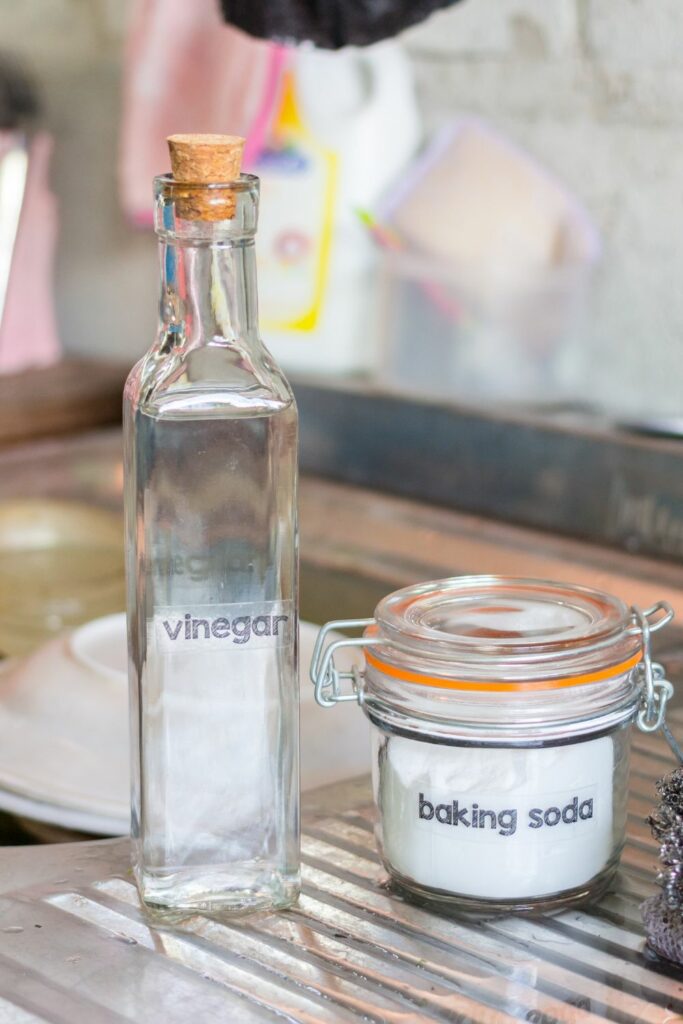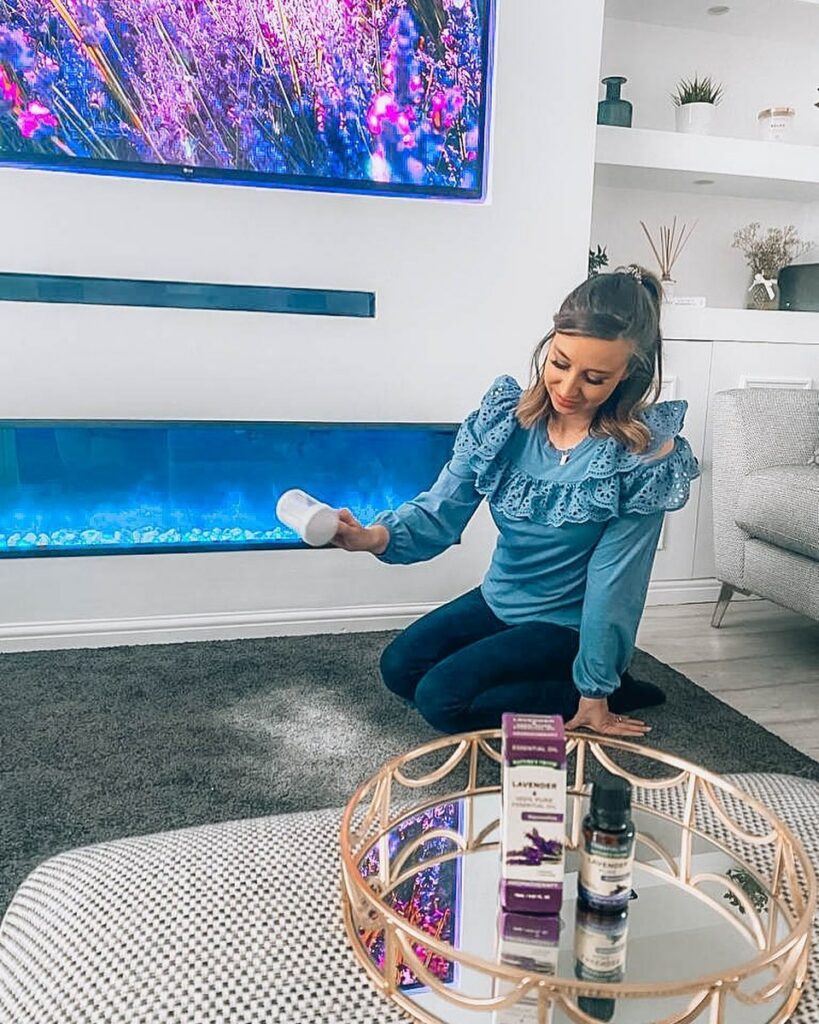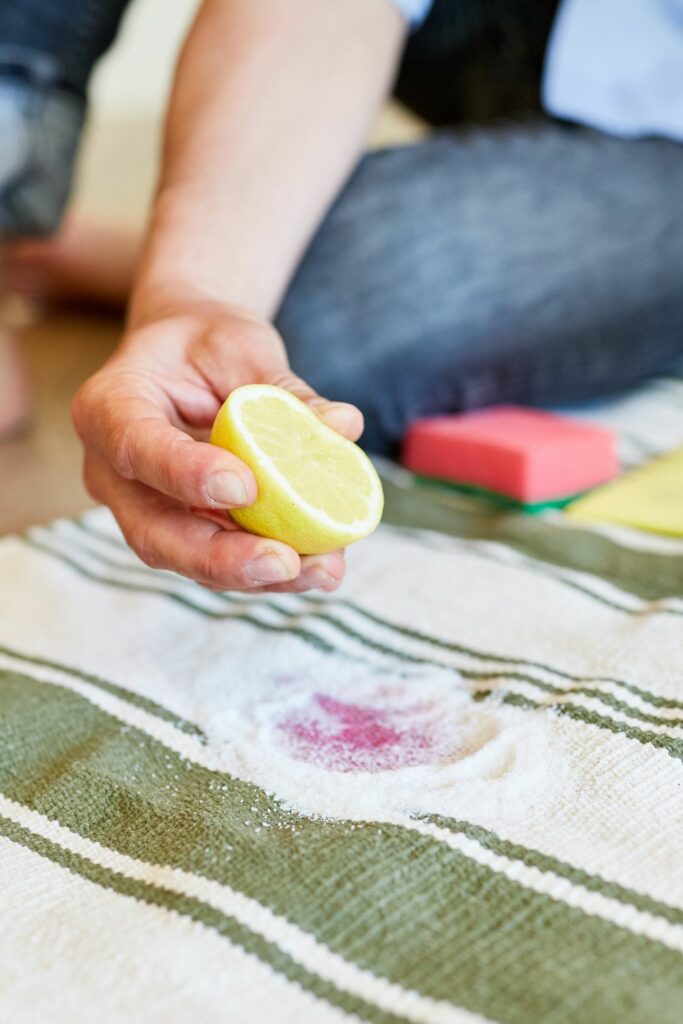In This Article Show
Welcome to the busy world of keeping a home sparkling clean while juggling the joys and challenges of parenting three lively kids! If you’re anything like me, you know that maintaining a clean and orderly house isn’t just a chore—it’s essential for sanity and peace of mind.
But let’s be real; with the endless cycle of spills, smudges, and the all-too-familiar toy explosions, who has the time for complicated cleaning routines?
That’s where Pinterest comes in—a goldmine for practical and doable cleaning tips that have been game-changers for me. And because I believe in sharing is caring, I’ve rounded up 7 cleaning tips every Pinterest enthusiast, including this mum, swears by. These aren’t your average tips; they are the real deal—tried and tested hacks that stand up to the rigors of a family home.
In the world of pins and repins, these cleaning strategies have survived and thrived, earning their place in the hall of fame for home upkeep. So, let’s get your house from “lived-in” to “loved-in” with these sparkling secrets that promise to make your daily cleaning routine a breeze. No fluffs, just the good stuff – let’s get to it!
The Magic of Vinegar and Baking Soda
As a mum of three, I’ve had my fair share of “oops” moments that have left me scrambling for a quick and effective cleaning solution. Enter the dynamic duo of vinegar and baking soda.
This combo isn’t just a fad; it’s a time-honored tradition that harnesses natural chemical reactions to tackle grime and grit without the need for harsh chemicals.
Great deals to snatch for your little ones 🎉
A Natural Cleaning Power
The science is simple yet fascinating. Vinegar, an acid, and baking soda, a base, react to neutralize each other.
This reaction releases carbon dioxide, creating a fizzing and bubbling action that works wonders in dislodging dirt and breaking down stains. This isn’t just chemistry 101; it’s the backbone of a green cleaning revolution right in your kitchen.
So, how do you put this science to work in your home? Here’s how to use this eco-friendly pair for a variety of cleaning tasks:
Drain Cleaner
Say goodbye to clogged drains without the need for harsh commercial cleaners. Pour half a cup of baking soda followed by half a cup of vinegar down the drain. Cover it with a wet cloth for about 5 minutes, then flush with hot water. Watch as the fizzing action powers through the gunk!
Oven Scrub
Cleaning the oven is a task most of us dread. But with a paste of baking soda and water, applied and left overnight, followed by a spray of vinegar, you’ll lift baked-on messes with less elbow grease.
Grout Brightener
Grout can become dingy and discolored. Make a paste with baking soda and vinegar, apply it to the grout, and scrub with an old toothbrush. The results? Grout that looks like new.
Coffee Maker Cleaner
Keep your machine in top shape by running a brewing cycle with equal parts water and vinegar, followed by a couple of water-only cycles. Finish by wiping down with a damp cloth sprinkled with baking soda to neutralize odors and remove stains.
Microwave Cleaner
Combine two tablespoons of vinegar and a cup of water in a microwave-safe bowl. Microwave on high until the mixture boils and the window steams up. Allow it to cool for a moment, then open the door and easily wipe away the softened food with a damp cloth sprinkled with baking soda.
By incorporating these vinegar and baking soda tricks into your routine, you’ll not only keep your home cleaner more naturally, but you’ll also join the ranks of Pinterest enthusiasts who can’t stop sharing these fantastic finds. Stay tuned, as we’ve got more tips on where that came from!

2. Microfiber Miracles

In a house full of kids, dust and messes are as sure as the sun rises. But one of my most treasured discoveries from the vast universe of Pinterest is the humble microfiber cloth. These little wonders have transformed the way I clean, and once you try them, you’ll never go back to your old rags or paper towels.
Dust and Clean With Greater Efficiency
Why are microfiber cloths the MVPs of the cleaning world? For starters, their design is ingenious. Microfiber is made of incredibly fine fibers that are split into even smaller strands, which are many times thinner than human hair.
This creates a larger surface area that can trap dirt, dust, and moisture more effectively than traditional cleaning materials.
Here’s why microfiber stands out:
- Superior Cleaning Power: The fine strands can reach into crevices and pores where cotton cloths cannot go, lifting and trapping dirt and grime efficiently.
- Less Effort Required: Microfiber cloths can clean effectively with just water, reducing the need for chemical cleaners and saving you time and effort.
- Environmentally Friendly: By reducing the use of disposable products and cleaning agents, you’re doing your part for the planet while keeping your home spotless.
- Cost-Effective: These clothes are durable and can withstand hundreds of washes, meaning you’ll save money over time by not having to replace them as often.
Now, to keep your microfiber cloths cleaning effectively, follow these care tips:
- Avoid Fabric Softener: Fabric softener can clog the fibers, reducing their effectiveness. Skip it when washing your microfiber.
- Separate Laundry: Wash your microfiber cloths separately from other laundry, especially cotton, to prevent lint transfer.
- Use Gentle Detergents: Stick to mild detergents and avoid bleach to maintain the integrity of the fibers.
- Air Dry or Low Heat: High temperatures can melt the fibers, so it’s best to air dry them or use the lowest heat setting on your dryer.
By taking care of your microfiber clothes, they’ll take care of the messes in your home for a long time. Stay tuned as we move on to more Pinterest-approved cleaning marvels that will upgrade your cleaning game to level in no time.
3. Essential Oils for a Fragrant Home

With kids running around, it’s not just the visible mess that can turn a home upside down; it’s also the odors that come with it. Essential oils have been a revelation for me, and they’re a top tip shared among Pinterest circles for good reason.
They’re not just about adding a pleasant aroma; they have properties that can enhance your cleaning routine and bring an eco-friendly freshness to your home.
Eco-Friendly Freshness
Incorporating essential oils into your cleaning regimen is straightforward and enjoyable. Here’s how you can do it:
DIY All-Purpose Cleaner
Add a few drops of lemon or tea tree essential oil to a spray bottle filled with water and a splash of white vinegar. This mixture is ideal for wiping down kitchen counters, bathroom surfaces, and even glass.
Freshening Fabrics
A few drops of lavender essential oil in your laundry can freshen up the whole load. You can also create a homemade fabric freshener by mixing water, a bit of baking soda, and your favorite essential oil in a spray bottle.
Deodorizing Disks
Combine baking soda with enough water to form a paste, then add your chosen essential oil. Pour into silicone molds and let dry to create deodorizing disks perfect for placing in the bottom of trash cans or diaper pails.
Vacuum Refreshers
If your vacuum emits a musty smell, try sprinkling a cotton ball with a refreshing essential oil like eucalyptus or peppermint and vacuum it up. As you clean, the scent will disperse throughout the room.
As for which scents to use here are some favorite blends for different areas of the house:
Living Room
A blend of sweet orange, frankincense, and cinnamon essential oils creates a welcoming and cozy atmosphere.
Bathroom
Eucalyptus and spearmint oils provide a crisp, clean scent that also has antibacterial properties.
Bedroom
For a calming and relaxing environment, lavender and chamomile are go-to’s, especially in children’s rooms to promote restful sleep.
Kitchen
Lemon or grapefruit oils are not only cheerful but also great for cutting through kitchen grease and lingering cooking odors.
By using essential oils, you’re choosing a path that is not only healthy for your family but also kind to the environment. No synthetic fragrances can compare to the natural, therapeutic benefits these plant-based wonders offer.
Ready for more tips? Stick around as we explore cleaning hacks that make your home sparkle and shine.
4. The Power of Lemon

When life gives you lemons, don’t just make lemonade—make your home shine! As a parent, I’m always on the lookout for safe, natural cleaning solutions, and lemons are one of my favorite go-to’s. Their natural acidity and refreshing scent make them a staple in any green cleaning kit, a fact that fellow Pinterest enthusiasts and I can attest to.
Citrus Clean for a Sparkling Home
Lemons have an array of uses in daily cleaning tasks. Their high citric acid content makes them powerful against stains and germs, and they leave behind a zesty scent that can’t be beaten. Here’s how you can harness the power of lemons in your cleaning routine:
Faucet Polish
Rub a lemon wedge on water-stained chrome faucets, then buff with a cloth. The citric acid cuts through limescale and mineral deposits, leaving your fixtures gleaming.
Cutting Board Refresh
To disinfect and deodorize wooden cutting boards, sprinkle coarse salt over the surface, scrub with a lemon half, then rinse. The lemon’s acidity helps neutralize odors and sanitize the wood.
Microwave Cleaner
Heat a bowl of water and lemon slices in the microwave for a few minutes, then let it stand with the door closed for another five. The steam loosens grime, and the lemon cuts through grease, making it easier to wipe clean.
Glass Cleaner
Mix water, a splash of vinegar, and a few drops of lemon juice in a spray bottle for an effective glass cleaner. It’s perfect for windows and mirrors without the streaks.
Garbage Disposal Deodorizer
Freshen up your disposal by grinding up lemon peels, creating a fresh scent and helping to clear out any lingering food waste.
For quick lemon-based cleaning recipes, try these:
- Lemon-Salt Paste: Combine lemon juice with salt to create a paste that can be used to scrub tough areas like grout or stovetops.
- Lemon-Vinegar Spray: Fill a jar with lemon peels, pour white vinegar over them, and let it sit for a week. Strain the liquid into a spray bottle for a potent all-purpose cleaner.
- Furniture Polish: A mixture of lemon oil, olive oil, and water can be applied to a soft cloth and used to give wooden furniture a beautiful shine.
The power of lemon in your cleaning arsenal is undeniable. It’s a simple, effective way to tackle everyday messes without relying on harsh chemicals.
Plus, it leaves your home smelling like a citrus grove—fresh, clean, and utterly delightful. Keep following along, as I’ve got even more cleaning wonders to share that will keep your home looking picture-perfect.
5. Organizational Hacks for Clutter-Free Spaces

A tidy home is a happy home, especially when you have energetic little ones transforming living spaces into obstacle courses. Organizational hacks aren’t just about cleaning; they’re about creating systems that prevent messes from happening in the first place.
I’ve unearthed some incredible Pinterest-inspired tips that double as cleaning hacks to help maintain a clutter-free and thus cleaner home.
Tidy Tips From the Pros
The beauty of an organization is that it’s both proactive and reactive. It helps you clean up existing messes and prevents future ones. Here are some of the most effective strategies:
Use Vertical Space
Install shelves above doorways or consider hanging organizers on the backs of doors. Going vertical can drastically increase your storage space and reduce clutter on the ground.
Clear Containers
See-through bins and jars for pantry items, toys, and craft supplies make it easy to find what you need and keep track of inventory, reducing the likelihood of overbuying and creating clutter.
Label Everything
Labels aren’t just for the perfectionist. They help everyone in the household know where things belong, making it easier to tidy up quickly.
One In, One Out Rule
To keep possessions from getting out of hand, adopt the rule that for every new item that comes into your home, one similar item must leave. This is great for clothes, toys, and books.
Daily Declutter Sessions
Make it a habit to spend 10 minutes each day with the family picking up and putting away items. Making this a game with kids can be fun and productive.
Ideas for Maintaining a Clutter-Free Home
Keeping a home clutter-free is an ongoing process, but these ideas can help you stay on top of it:
Decluttering Baskets
Keep a basket in each room where you can quickly toss items that don’t belong there. Once full, take a few minutes to put everything in its rightful place.
Regular Purges
Set a date every month for a ‘mini purge’ when you go through a particular area or category of items and decide what can be donated, sold, or thrown away.
Use Drawer Dividers
These simple organizers can prevent the notorious “junk drawer” phenomenon and make it a breeze to find what you’re looking for.
Zone Cleaning
Divide your home into zones and focus on organizing and cleaning one zone thoroughly each week. This ensures every part of your home gets attention regularly without becoming overwhelming.
Incorporating these organizational hacks into your routine not only makes your home more efficient and pleasant but also saves you time in the long run. Now that you’ve got some of the best Pinterest-approved advice for keeping a tight ship, the battle against clutter and mess will be one you’re well-equipped to win.
Let’s move on to more smart cleaning tips that every Pinterest enthusiast—and every parent—should have up their sleeve.
6. Steam Cleaning – Beyond the Basics

If you think steam is just for getting wrinkles out of clothes, prepare to be amazed. As a mother of three, steam cleaning has become an unexpected hero in my cleaning routine. It’s a method that Pinterest pros love for its versatility and effectiveness, and it’s an all-natural way to sanitize almost every surface in your home.
The Wonders of Steam in Your Cleaning Collection
Steam cleaning uses vaporized water to clean and disinfect, which means no chemicals are necessary—something I’m particularly mindful of with little ones around. Here’s how you can leverage the power of steam throughout your household:
Refresh Upholstery and Carpets
Use a steam cleaner with an upholstery attachment to breathe new life into sofas and carpets. It’s great for removing stains and odors without using harsh chemicals.
Sanitize Toys and Play Areas
A steam cleaner can sanitize hard-to-clean toys and play areas better than wipes. It gets into nooks and crannies, killing germs with high-temperature steam.
Clean Grout and Tile
The high pressure of steam cleaners can blast away grime in grout lines and on tile surfaces, leaving bathrooms and kitchens sparkling without the elbow grease.
Revitalize Window Treatments
Curtains and blinds are often neglected during routine cleaning. A gentle steam can remove dust and give them a fresh look without taking them down.
Kitchen Deep Clean
Steam can degrease ovens, sanitize cutting boards, and clean appliance crevices where crumbs and grime accumulate.
Precautions and Best Practices for Steam Cleaning
While steam cleaning is highly effective, it’s also a tool that needs to be used correctly to avoid damage:
Read the Manual
Different steam cleaners have specific instructions and capabilities. Always familiarize yourself with your model’s guidelines.
Test First
Before going to town on a surface, do a spot test in an inconspicuous area to ensure the heat or moisture will not damage the material.
Avoid Certain Surfaces
Never use a steam cleaner on delicate fabrics, silks, thin plastics, or any materials that are susceptible to heat damage.
Safety First
The steam is scalding, so wear gloves, and if you have children, make sure they are at a safe distance while you’re using the steam cleaner.
Dry Properly
Although steam cleaning leaves less moisture behind than other methods, ensure that steamed areas, especially carpets and upholstery, are thoroughly aired out to prevent mildew.
Steam cleaning is a hack that’s gaining popularity among those who are eco-conscious and those who are simply tired of conventional—and sometimes ineffective—cleaning methods.
Incorporating it into your routine can not only help you clean more effectively but also reduce the time spent scrubbing and scouring. Stay tuned as we continue to unveil more tips that will keep your household in pristine condition!
7. DIY Natural Cleaning Products

In our pursuit of a spotless home, we often overlook the simple solutions that nature offers. Crafting your cleaning products isn’t just about being eco-friendly—it’s about creating a safe environment for the ones we love.
After years of trying and testing, I’ve turned to DIY natural cleaning solutions, much like many Pinterest enthusiasts who swear by their effectiveness and safety.
Crafting Your Own Clean
Creating your cleaning products is easier than you might think, and the benefits are immense. Not only do you save money, but you also reduce the number of harmful chemicals in your home. Here’s how to whip up some simple yet powerful cleaners:
All-Purpose Cleaner
Combine equal parts water and white vinegar in a spray bottle. Add 10-15 drops of your favorite essential oil for a fresh scent. This cleaner is safe for most surfaces and is particularly effective for cleaning glass.
Scouring Paste
Make a paste of baking soda and water, with a little lemon juice for extra cleaning power and a fresh scent. It works wonders on tough stains and grimy surfaces.
Wood Polish
Mix olive oil and lemon juice in a 2:1 ratio for a natural wood polish. Apply with a soft cloth for furniture that looks nourished and shiny.
Carpet Freshener
Sprinkle baking soda mixed with a few drops of essential oil over your carpet. Let it sit for 15 minutes before vacuuming for a fresh and clean smell.
Toilet Bowl Cleaner
Pour 1/2 cup of baking soda followed by 1 cup of vinegar into the toilet bowl. Let it fizz before scrubbing. It’s a natural and effective way to get your toilet sparkling.
How to Create a Natural Cleaning Kit
Having a DIY cleaning kit ready means you’re always prepared for any mess or spill. Here’s what to include:
- Ingredients: Stock up on white vinegar, baking soda, castile soap, essential oils, lemon juice, and olive oil.
- Tools: Have spray bottles, mixing bowls, measuring cups, microfiber cloths, a scrub brush, and empty jars on hand.
- Labels: Label your homemade products clearly, including the date you made them, for easy identification and to track shelf life.
- Recipes: Keep your favorite recipes in your cleaning caddy for quick reference and easy re-makes.
This approach to cleaning is not just about keeping a home tidy; it’s about taking control of what goes into your living space and how it affects the health of your family.
These DIY products are a testament to the power of natural ingredients and their place in our homes. As we round off our list of Pinterest-approved cleaning tips, remember that the most powerful tool in your arsenal is knowledge—the understanding of what works and the wisdom to use it effectively.













